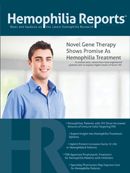Publication
Article
Hemophilia Reports
Specialty Pharmacies May Improve Care for Hemophilia Patients
Study suggests coagulation factor products should be billed through the pharmacy benefit and provided by specialty pharmacies.

To improve the care of patients with hemophilia and von Willebrand’s Disease (vWD), coagulation factor products should be billed through the pharmacy benefit and provided by specialty pharmacies, the authors of a recent study suggest.
With more insurers covering coagulation factor products under the pharmacy benefit rather than the medical benefit, researchers sought to identify strategies health plans can use to improve the management of hemophilia and vWD. Using administrative claims data, the researchers determined the prevalence of coagulation factor treatment among hemophilia or vWD patients, the distribution of annual factor cost for treated patients, and sources of variations in cost among individual patients. They presented their findings at the Academy of Managed Care Pharmacy Nexus 2013: Connecting Health Care and Innovation Conference in San Antonio, Texas.
The researchers looked at complete medical and pharmacy claims data from a population of 10 million patients insured by 11 health plans. Male patients with at least 1 claim for coagulation factor VIII (F8), F8 and von Willebrand’s Factor (vWF), or a bypassing product were identified as hemophilia A patients if they had least 2 medical claims with a diagnosis of hemophilia A. Male patients with at least 1 claim for factor IX (F9) or a bypassing product were categorized as hemophilia B patients if they had at least 2 medical claims with a diagnosis of hemophilia B. Male or female patients with at least 1 claim for F8, F8 and vWF, or a bypassing product were characterized as vWD patients if they had at least 2 medical claims with the diagnosis of vWD.
The total cost for factor treatment included plan payments plus patient payments for all coagulation factor product claims. To determine whether factor cost remained consistent with continuous prophylaxis, data on weight and age from the National Health and Nutrition Examination Survey and data on hemophilia dosing practices from a published survey were used to estimate the expected cost of treatment among hemophilia patients.
Of 7,895,117 patients included in the study, 382 had claims for coagulation factor products and met the criteria for hemophilia A or B or vWD. Prevalence of hemophilia A and B and vWD was significantly higher among patients younger than 25 compared with those aged 25 to 64. The average cost of treatment was $231,386 for hemophilia A patients, $144,527 for hemophilia B patients, and $29,625 for vWD patients. Thirteen patients had claims for a bypassing product, and 7 of these patients had costs exceeding $1 million. Among patients with hemophilia A, 61.1% had factor costs below the estimated range for continuous prophylaxis, while 69% of hemophilia B patients had costs below the estimated range.
The authors noted that the claims data lacks information on patient weight, severity of factor deficiency, inhibitor titer, treatment protocol, and member adherence. “To better manage factor use, information will need to be collected via specialty pharmacy services,” they concluded.




